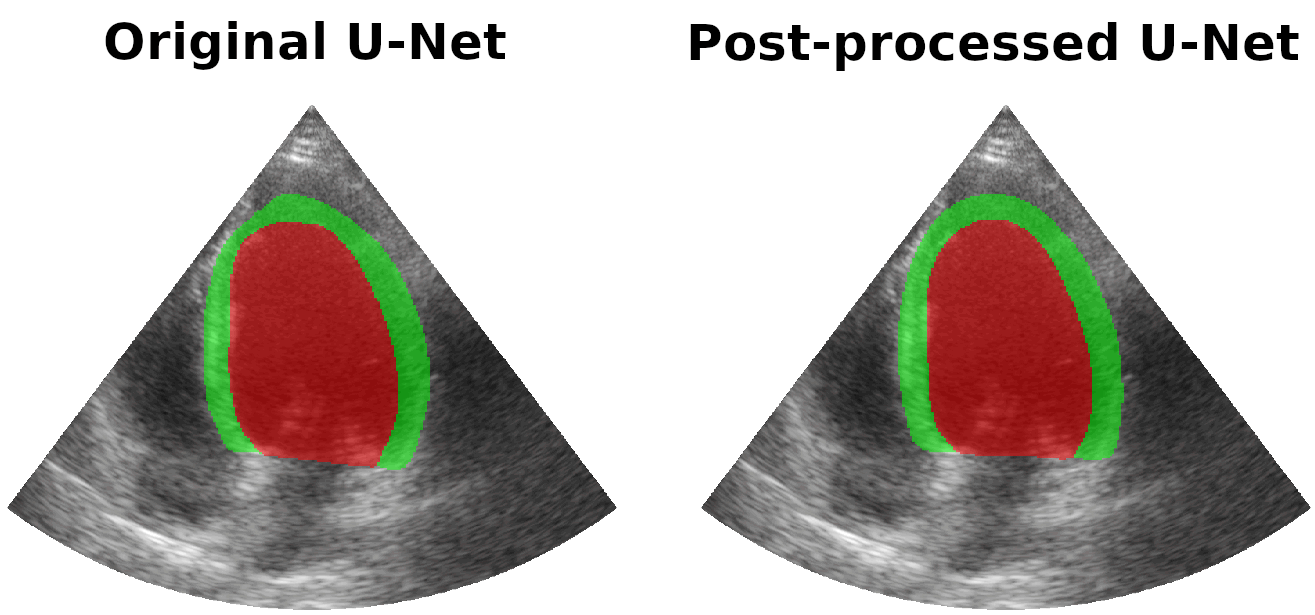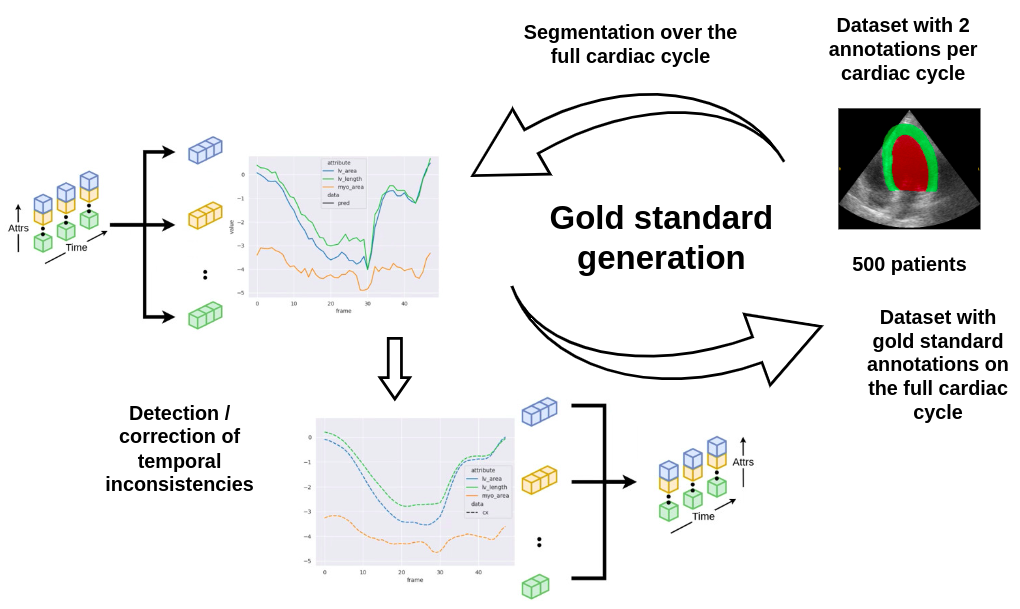Representation learning for gold standard segmentation generation
This work was done by my PhD student Nathan Painchaud in co-supervision with Pr. Pierre-Marc Jodoin at the university of Sherbrooke and expert in AI.
We developped a framework to learn the 2D+time apical long-axis cardiac shape such that the segmented sequences can benefit from temporal and anatomical consistency constraints. Our method is a post-processing that takes as input segmented echocardiographic sequences produced by any state-of-the-art method and processes it in two steps to (i) identify spatio-temporal inconsistencies according to the overall dynamics of the cardiac sequence and (ii) correct the inconsistencies. The image below shows an example of this correction on a real sequence.

The identification and correction of cardiac inconsistencies relies on a constrained autoencoder trained to learn a physiologically interpretable embedding of cardiac shapes, where we can both detect and fix anomalies. The diagram below shows the overall strategy of our approach.

